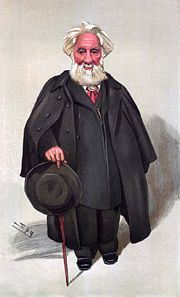Basic Introduction
. 1824 British astronomers on Feb. 7, the london - born Stoker, New Inn, on 12 May 1910 and died in London
had never gone to a regular school, 1842 - 1854 commercial had never gone to a regular school, 1842 - 1854 commercial . in 1854 and moved to London near Tulse Hill, in 1856 and built a private observatory in the spring of life # He is a pioneer of astronomical spectroscopy, first of all, the spectroscopic analysis is applied to study the stars, and photography is used for spectral research in 1859 in 1854 and moved to London near Tulse Hill, in 1856 and built a private observatory in the spring of life # He is a pioneer of astronomical spectroscopy, first of all, the spectroscopic analysis is applied to study the stars, and photography is used for spectral research in 1859 .
20 cm refracting telescope on the spectrometer. observed stellar spectra in 1863 and W. A. Miller, in collaboration with the Royal Astronomical Society proposed the observation result, it is pointed out that the bright sun and the stars have the same chemical composition, they were from a lower layer of the hot material, passing through the top of a suction power which is produced by outward radiation
1864 with spectrometer observations of emission nebulae, gas, and found that planetary nebulae can be explained by two green lines, he is considered to be the unknown elements of the spectral lines, called line 1864 with spectrometer observations of emission nebulae, gas, and found that planetary nebulae can be explained by two green lines, he is considered to be the unknown elements of the spectral lines, called line . until 1927 - - led by U. S. Bowen, and revealed their secondary ionization of the oxygen is forbidden lines
1866 on May 18,Hagens Spectrometer with the observation for the first time in 1866 Corona Borealis Nova, found in the absorption spectra of the bright hydrogen emission lines, indicate that a transmission line is from the temperature higher than the surface temperature of the gas casing 1866 on May 18,Hagens Spectrometer with the observation for the first time in 1866 Corona Borealis Nova, found in the absorption spectra of the bright hydrogen emission lines, indicate that a transmission line is from the temperature higher than the surface temperature of the gas casing . Hagens is used for the observation of the 1866, 1867, 1868, the three spectra of comets, comets discovered in the spectrum of hydrocarbons, in the band, and in 1864 was confirmed by Italian Massimo Donati pointed out that the conclusions of the comet is not only reflecting sunlight and also light emitting Hagens is used for the observation of the 1866, 1867, 1868, the three spectra of comets, comets discovered in the spectrum of hydrocarbons, in the band, and in 1864 was confirmed by Italian Massimo Donati pointed out that the conclusions of the comet is not only reflecting sunlight and also light emitting .
in 1868, he was using the Doppler effect,According to the star of the spectral line to measure the displacement of the days - of - sight velocities of Wolf in 1868, he was using the Doppler effect,According to the star of the spectral line to measure the displacement of the days - of - sight velocities of Wolf . 1876 - 1878 Ren, president of the Royal Astronomical Society in 1867 and 1885 twice obtained the medal of the Society from 1900 to 1905 1876 - 1878 Ren, president of the Royal Astronomical Society in 1867 and 1885 twice obtained the medal of the Society from 1900 to 1905 .
Ren, president of the Royal Society Ren, president of the Royal Society .
Honors Obtained
award a prize in 1867 with William Allen Miller was awarded the Royal Astronomical Society (The Royal Astronomical Society's Gold Medal in 1898 award a prize in 1867 with William Allen Miller was awarded the Royal Astronomical Society (The Royal Astronomical Society's Gold Medal in 1898 . awarded the Copley Medal (Copley Medal in 1901 was awarded the Henry Draper Medal of the Henry Draper Medal in 1904 Bruce Medal (awarded the Bruce Medal in named for it as a sign of honor of the lunar crater Huggins Huggins (crater) Mars 2635 Huggins (pits)1 awarded the Copley Medal (Copley Medal in 1901 was awarded the Henry Draper Medal of the Henry Draper Medal in 1904 Bruce Medal (awarded the Bruce Medal in named for it as a sign of honor of the lunar crater Huggins Huggins (crater) Mars 2635 Huggins (pits)1.
Published Works
Spectrum analysis in its application to You bodies. Manchester, 1870 (Science for the People; series 2, no. (3) with Lady Huggins): An atlas of representative spectra from laMbda 4870 to lambda 3300, together with a discussion of the evolution of the order of stars, and the interpretation of spectra; a short history of the observatory. (London, 1899 (PublSir William Huggins ofObservatory's; v. 1) of The Royal Society, Science in the state and in the. London, 1906. The scientific Aris and Sir William Huggins; foreword by Sir William and Lady Huggins. London, 1909 (Puof Sir William Huggins's Observatory; v. 2) 1
